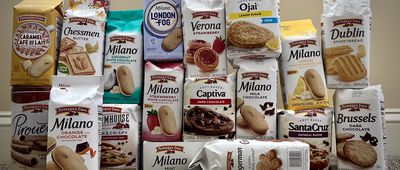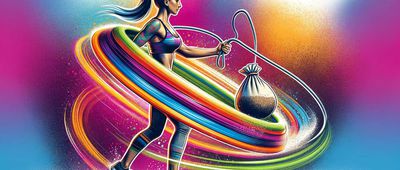Best Cheap All-in-One Printers
For frugal consumers, there is an obvious appeal to buying a multifunction printer: It can save on the cost of numerous visits to a copy center or separate machines that would otherwise crowd a home office. The best cheap all-in-one printers can copy, scan, and in some cases fax, as well as print, without costing much more than a stand-alone printer. We've researched the latest models and longstanding favorites, sorting through expert reviews and hundreds of user comments to determine which budget printers stack up to the demands of both everyday home use and small businesses with modest needs. With starting prices under $100, all our picks are inkjets, not laser printers, but they're all compact enough to sit on a desk or small table. They provide a range of connectivity options and features that appeal to consumers looking for high-quality text and photo printing, ease of use, and convenience in addition to a low price tag.
Our Top Pick


Canon Pixma MG5720 Review
Pros: Reviewers praise the Canon Pixma MG5720 (starting at $69) as one of the best deals around for budget shoppers who want a printer that can produce excellent photos quickly and generally excels at everything it does. PCMag named it an Editors' Choice in 2015 and ranked it near the top of its list of the best all-in-one printers of 2016. The PCMag reviewer says the Pixma MG5720 produces documents of all kinds fairly quickly, but he was especially impressed with the printer's ability to make 4 x 6-inch photo prints in only 54 seconds, decidedly faster than average. The quality of these photos is impressive, as well. They're vibrant, with accurate color and sharp detail. A reviewer from Computer Shopper claims this is the best photo output you can get unless you're willing to spend a lot more. Text and color graphics also look better than those produced by competing MFPs and are worthy of professional documents.
Cons: Amid the praise for fast photo-printing speed, the Computer Shopper expert gripes that that printing documents on the Pixma MG5720 can be more than a little slow, and there's no automatic document feeder to facilitate faster scanning. Also, while this wireless printer has a variety of wireless connectivity options, there's no memory card slot or support for USB flash drives for direct printing that way.
Features: According to Canon's specs, the Pixma MG5720 can produce black-and-white pages at 12.6 images per minute and color at 9 images per minute. Its top color resolution is 4800 x 1200 dots per inch, and black-and-white documents max out at at 600 x 600 dots per inch. The printer supports typical paper sizes such as 4 x 6, 5 x 7, 8 x 10, letter, legal, and #10 envelopes. The printer is capable of automatic duplexing and borderless printing. Likewise, the copier can produce two-sided and borderless copies. It also has a fade restoration feature. The Canon Pixma MG5720 works with most Windows systems (Windows XP and later) as well as Macs beginning with OS X 10.7.5 (Lion). Canon has its own app for the printer, and users can print via Google Cloud Print or Apple's AirPrint, using a variety of Apple and Android mobile devices. Like most Canon printers, this model supports wireless PictBridge, for direct printing from Wi-Fi-equipped Canon cameras.
The Canon Pixma MG5720 includes basic photo-editing features such as red-eye fix and cropping, so users can make simple changes to photos directly on the printer. The scanner's optical resolution is 1200 x 2400 dots per inch. It includes an auto-scan mode and has a 48-bit color depth. The 2.5-inch LCD is about average size for printers in this price range. The printer uses five separate ink tanks, so ink colors can be replaced individually as necessary. It has a 100-sheet input tray, typical for printers in this price range. The printer measures 18 x 14.6 x 5.9 inches and weighs 13.8 pounds.
Takeaway: The Canon Pixma MG5720 is an excellent all-around printer that consistently and speedily produces superior-looking photos. Other printing tasks may take longer, but the graphics and documents produced may be worth the wait for consumers looking primarily for a great photo printer that can also do light work in a home office.

Epson Expression Home XP-430 Review
Pros: The Epson Expression Home XP-430 (starting at $60) is a versatile printer that stands out for its compact footprint, convenient connectivity, and consistent print quality. Weighing in at only 9 pounds, the XP-430 measures just 15.4 x 11.8 x 5.7 inches when all trays are closed. A CNET expert says the size makes it a great pick for students and others working in tight spaces. This reviewer was also impressed with the low upfront price and the relatively low cost of ink cartridges. The XP-430 prints black-and-white documents at a respectable 8.5 pages per minute, according to CNET tests, though other types of print jobs are a little slow. The quality of the output is very respectable: Text is sharp and clean, the reviewer says, and color graphics and photos also look very good. Consumer reviews on Amazon echo this positive feedback. They verify that the Expression Home XP-430 is easy to connect to a wireless network and works well with Android and Apple devices. Users also like that it has a memory card reader.
Cons: The CNET reviewer laments the lack of a USB port for flash drives and an automatic document feeder -- which users agree can make scanning several individual pages tedious -- but these absences are not unusual for an MFP in this price range. However, the printer also lacks automatic double-sided printing, which is a pretty common feature even among the cheap competition. Some users also complain that the printer takes a while to complete jobs, and several note that it uses a lot of ink, which means cartridges must be frequently replaced. Several reviewers note that, while the ability to change individual ink cartridges is a plus, the Expression Home XP-430 will not print at all -- even in black-and-white mode -- if any of the color cartridges is empty. The need to use proprietary ink cartridges is also a point of contention.
Features: The Epson Expression Home XP-430 has a maximum resolution of 5760 x 1440 dots per inch Epson says the printer prints black-and-white documents at 9 pages per minute and color at 4.5 pages per minute. It uses four ink cartridges (one black and three color). The paper sizes it supports are, for the most part, pretty typical, although it does list a maximum paper size of 8.5 x 44 inches, and the array of paper types it can load includes Epson iron-on transfer paper and presentation paper. The scanner's top hardware resolution is 2400 dots per inch, with 48-bit color. The copier can print up to 99 copies without using a PC.
The memory card slot on the Expression Home XP-430 allows users to print photos directly, PC-free, and make basic photo and document edits via the control panel. Computers can connect via a standard USB printer cable or Wi-Fi, and mobile devices can be used with Wi-Fi Direct. Epson has a variety of apps available for the printer, which works with Apple's AirPrint and Google Cloud Print, as well. It supports several operating systems, including Windows XP and newer and Mac OS X beginning with version 10.6.8 (Snow Leopard). The Expression Home XP-430 has an easy-to-read 2.7-inch LCD.
Takeaway: The Epson Expression Home XP-430 is a solid all-in-one that produces nice-looking documents and photos. It has a host of wireless connection options and a slew of apps. It lacks a few more basic features that users would like to have, such as auto-duplexing and an automatic document feeder, but for the low price, many are satisfied with the trade-offs.

Canon Pixma MG6820 Review
Pros: The Canon Pixma MG6820 (starting at $80) is very similar to our top choice, the lower-priced Canon Pixma MG5720 (starting at $69), but the Pixma MG6820 includes a memory card slot and has a larger 3-inch touchscreen, compared with the 2.5-inch LCD on the MG5720, which is not a touchscreen. Like other printers in this line, the Canon Pixma MG6820 excels at printing photos. A PCMag reviewer says the color is outstanding, and photos print very quickly. Best Buy shoppers are likewise happy with the photos from this printer and appreciate that they can print pictures directly from a smartphone. In reviews on Amazon, many home users also praise the quality of printed documents, and several claim that even in cost-saving "draft" mode, text comes out looking quite good.
Cons: Although PCMag's reviewer appreciates the touchscreen and memory card slot, he says they're not necessarily enough to justify the price difference between the MG6820 and the MG5720. After all, the Pixma MG6820 still doesn't include an automatic document feeder, fax capability, a USB port for flash drives, or an Ethernet port -- perks one might expect to find on an MFP that's a step or two up the feature scale. Also, while the Pixma MG6820 does print photos quickly, it prints business documents on the slow side, at an average of 2.6 pages per minute under PCMag's testing conditions. Also, according to tests, the print quality of the documents isn't that exceptional -- good enough for most home business needs, such as PowerPoint printouts, but not great at delivering on some full-page graphics or very small print. Finally, while many reviewers consider this printer very easy to use, a few say the setup can be a little tricky, and the touchscreen navigation could be improved.
Features: Canon claims that the Pixma MG6820 can print black-and-white documents at up to 15 images per minute and color documents at 9.7 images per minute. Its highest resolution is 4800 x 1200 dots per inch for color and 600 x 600 dots per inch for black and white. The printer handles typical paper sizes such as 4 x 6, 5 x 7, 8 x 10, letter, legal, and #10 envelopes. It's equipped with automatic duplexing and can produce borderless prints. The copier also supports two-sided copy, borderless copy, and fade restoration. The scanner's optical resolution is 1200 x 2400 dots per inch, and it includes an auto-scan feature. It has a 48-bit color depth. The MG6820 uses five separate ink tanks, so colors can be replaced individually as needed.
This Canon model supports Apple's AirPrint and Google Cloud Print and also includes wireless PictBridge support. The printer works with most Windows systems (XP and up), as well as Macs beginning with OS X 10.7.5 (Lion). Mobile support includes Apple iOS, Android, Windows RT, and even Amazon Fire devices. When using the memory card slot, users can do basic photo editing, such as red-eye correction, directly on the 3-inch touchscreen.
Takeaway: The Canon Pixma MG6820 is a solid printer that promises great photos, but it has only a couple more features than the cheaper Pixma MG5720. The larger display and touchscreen don't seem to add much value, but for those who often print from memory cards, the upgrade may be worth it. For most users, however, the MG5720 probably remains the better option.

HP OfficeJet 4650 Review
Pros: A Computer Shopper reviewer says one of the best features of the HP OfficeJet 4650 (starting at $68) is its 35-page automatic document feeder. The ADF is a huge time saver for scanning multiple pages at a time. The apps built into the printer offer some interesting options, including the ability to print games, coloring books, templates, calendars, and fax covers directly from the printer's LCD menu. The quality of the printouts is very good, says the reviewer, with sharp text and graphics and photos showing bright, vibrant color. Copies and scans are also high quality. Users like the low price of the HP OfficeJet 4650 and how easy it is to set up, according to reviews on Amazon. They also appreciate that they can print from the web and mobile devices.
Cons: On the downside, there's no getting around the fact that the HP OfficeJet 4650 takes its time to create those nice-looking documents and photos. HP lists the print speed at top/laser quality at 9.5 pages per minute in black and 6.8 pages per minute in color. But the Computer Shopper expert timed its output for business documents at only 1.4 pages per minute on average. Shoppers reviewing the printer Amazon also complain about how long it takes to print and copy documents, although most agree the print quality is excellent, and copies and scans look "crystal clear." There are a few reports of the printer disconnecting from users' Wi-Fi networks, but that's not unusual with any wireless printer. Finally, this printer takes tri-color ink cartridges, which means the entire cartridge must be replaced when just one color runs out. A PCMag reviewer points to HP's Instant Ink program as a potential money saver.
Features: The HP OfficeJet 4650 includes a fax machine in addition to its other features. The fax machine has memory for 99 pages and 99 speed dial numbers. The maximum resolution is 1200 x 1200 dots per inch for black and white and 4800 x 1200 dots per inch for color. The paper tray has a 100-page input, and the output tray holds 25 sheets. This all-in-one also has a 35-page automatic document feeder, and supports auto duplexing. The scanner's top resolution is 1200 x 1200 pixels per inch, and it has 24-bit color depth.
The OfficeJet 4650 supports Wi-Fi connections and works with Apple's AirPrint and Wi-Fi Direct compatible devices. It also has a USB port. The printer works with versions of Windows from XP on and Mac OS X beginning with version 10.8 (Mountain Lion). It has a 2.2-inch monochrome LCD.
Takeaway: It's unfortunate that the HP OfficeJet 4650 runs on the slow side, but its template printing and fax capability are desirable add-ons. The 35-page ADF is also a great feature for users who have to scan large documents at once. Consumers who need quick output will probably want to find another option, but for some shoppers, the high print quality and convenient features redeem this printer's pokiness.

Brother MFC-J485DW Review
Pros: Consumers reviewing the Brother MFC-J485DW on Walmart.com say they like how easy it is to connect this printer to a Wi-Fi network, and they're also fans of its auto-duplexing, fax machine, and mobile apps. They appreciate that it works well with Chromebooks, and even the Linux-based Ubuntu operating system, and uses separate ink tanks for different colors. Consumers posting reviews on Best Buy's website give the Brother MFC-J485DW (starting at $60) positive marks for easy setup, as well. Moreover, they're very happy with the low cost of the printer and its replacement inks. These reviewers say photos have vivid color, and copies printed from this all-in-one look very good. The 20-sheet automatic document feeder is also a boon and makes larger copying and scanning jobs much more convenient.
Cons: The Brother MFC-J485DW has a low price and some nice features, but users pan it for ridiculously slow print speeds. On the Best Buy website, speed is voted an overwhelming negative despite a decent rating overall, and there's even one report of the printer taking nearly an hour to produce a 10-page PowerPoint document. Copying is an equally slow process, according to these reviewers. Aside from sluggishness, many users complain of frequent jams, particularly when printing double-sided pages. For those who had issues with connectivity, Brother's online support was often deemed fairly unhelpful, and several users say they finally just gave up on the machine.
Features: The Brother MFC-J485DW uses a four-tank ink system. According to the manufacturer, the maximum print speed is 12 pages per minute for black-and-white documents and 6 pages per minute for color. The maximum resolution is 6000 x 1200 dots per inch, and the printer can make borderless prints. The copier can use the 20-sheet automatic document feeder and produce copies at up to 6 pages per minute. The 30-bit scanner has an optical resolution of 2400 x 1200 dots per inch and can scan from email, memory cards, or a USB flash drive. The fax machine has a 200-page memory. The input tray holds 100 sheets, and the output tray holds 50 sheets. The MFC-J485DW supports automatic duplexing and can load a variety of common paper sizes.
The Brother MFC-J485DW has several connection options, including USB, Wi-Fi, and Wi-Fi Direct. Users can print through Apple's AirPrint and Google Cloud Print, and PictBridge is also supported. Brother provides a variety of proprietary apps for the MFC-J485DW, as well. It measures 15.7 x 13.4 x 6.8 inches and weighs 16.8 pounds. The 1.8-inch display is on the small side.
Takeaway: The Brother MFC-J485DW offers a nice collection of features for a nice price, including a 20-sheet ADF, automatic duplexing, a built-in fax, and support for USB flash drives. However, its oh-so-slow printing is a sore spot for many users and may be a deal breaker for potential buyers.

HP Envy 5540 Review
Pros: The HP Envy 5540 (starting at $72) is a solid all-in-one printer with some nice features and a wide range of connectivity options. An expert from PCMag likes that the Envy 5540 has automatic duplexing and a 125-sheet input tray, which is larger than just about any other model in this price range, plus another 15-sheet photo tray. Photos print fast with the Envy 5540 compared with similar printers. The PCMag reviewer reports that the machine produced a 4 x 6 photo in only 53 seconds. The output quality was judged about average or a little better across the board.
Cons: In terms of its performance and output speeds, the HP Envy 5540 wavers between fast and slow depending on the task. In contrast to its speed with photos, the printer produces business documents rather slowly, PCMag says, at only about 2.1 pages per minute. Many users agree with this assessment, according to reviews on Amazon. We found many complaints about the Envy 5540 taking way too long to print documents, and even longer to copy and scan. Add to this several complaints about general "touchiness" with the machine, a frequent need to reset paper selections or reboot entirely, and more than a few reports of faulty units. Perhaps the biggest gripe, however, is that the Envy 5540 appears to be an ink guzzler. Top Ten Reviews notes that the ink for this printer can be expensive, and it uses a single tri-color ink cartridge, instead of separate tanks for each color. A consumer who posted a review on Amazon is among more than a few users who are put off by what they consider HP's "hard sell" tactics, such as pop-ups warning of low ink levels and pushing for enrollment in the company's Instant Ink refill program.
Features: The HP Envy 5540 has a maximum black-and-white resolution of 1200 x 1200 dots per inch and maximum color resolution of 4800 x 1200 dots per inch. HP says the printer's top speed is 12 pages per minute for black-and-white documents and 8 pages per minute for color. It supports automatic duplexing but does not include an automatic document feeder. It can work with an array of media types, including card stock, iron-on transfers, and transparencies. The scanner has an optical resolution of 1200 dots per inch, and 24-bit color depth.
Users can connect to the Envy 5540 via USB, Wi-Fi, or Wi-Fi Direct. This printer supports Apple's AirPrint but does not list support for Google Cloud Print in its specifications. It's compatible with Windows operating systems from Windows XP and Mac OS X Mountain onward. The 2.2-inch display is touch-enabled.
Takeaway: The HP Envy 5540 has some strong points, such as fast photo printing and good output quality, but it's slower than most MFPs when it comes to printing business documents. The single tri-color ink tank is also off-putting, because it wastes ink and can run up costs. The HP Envy 5540 is a decent printer but may not be worth the price.



















